Discover 11 hidden attractions, cool sights, and unusual things to do in Loughborough (United Kingdom). Don't miss out on these must-see attractions: Beacon Hill, John Taylor & Co, and Charnwood Museum. Also, be sure to include Loughborough Town Hall in your itinerary.
Below, you can find the list of the most amazing places you should visit in Loughborough (England).
Table of Contents
Beacon Hill

Beacon Hill, near Loughborough, in Leicestershire, England, is a popular country park. It is one of several beacon hills in the United Kingdom. It is part of Beacon Hill, Hangingstone and Outwoods Site of Special Scientific Interest.[1]
Address: Breakback Rd, LE12 8TA Loughborough
John Taylor & Co
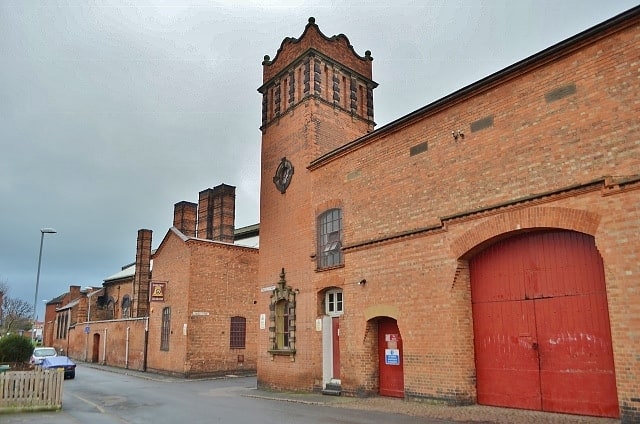
John Taylor Bell Foundry Limited, trading as John Taylor & Co and commonly known as Taylor's Bell Foundry, Taylor's of Loughborough, or simply Taylor's, is the world's largest working bell foundry. It is located in Loughborough, in the Charnwood borough of Leicestershire, England. The business originated in the 14th century, and the Taylor family took over in 1784.
The company manufactures bells for use in clock towers, rings of bells for change ringing, chimes, and carillons. In 2005, Taylor's merged with Eayre & Smith Limited (bellhangers) and from 2005 until 2009 was known as Taylors Eayre & Smith Limited.
In September 2009, Taylor's went into administration but was bought out of administration by a consortium named UK Bell Foundries Ltd, led by Andrew Wilby, which re-financed the business. Since then, the company has re-established its presence both in the UK and in export markets.
The foundry has a museum of bells and bellfounding, which is the only one of its kind in the UK. It is one of the few Victorian purpose-built manufacturing sites still being used for its original purpose. Its campanile contains the most-pealed bells in the world.[2]
Address: Freehold St, LE11 1AN Loughborough
Charnwood Museum

Museum in Loughborough, England. Charnwood Museum is a local history museum in Loughborough, Leicestershire, England.[3]
Address: Granby St, LE11 3DU Loughborough
Loughborough Town Hall
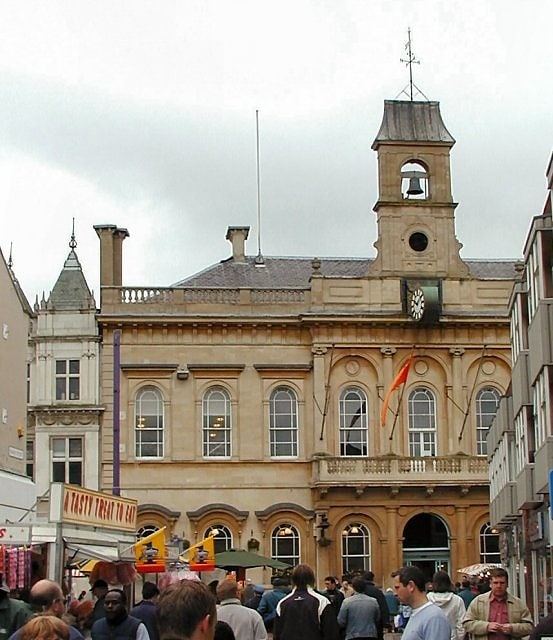
Performing arts theater in Loughborough, England. The Loughborough Town Hall is a building fronting onto the Market Place in Loughborough, Leicestershire, England. Built as a corn exchange and ballroom in 1855, it became a municipal building and subsequently a theatre. It is a Grade II listed building.[4]
Address: Market Place, LE11 3EB Loughborough
Loughborough Carillon

Loughborough Carillon is a carillon and war memorial in Loughborough, Leicestershire, England. It is in Queen's Park, and is a well-known landmark, visible from several miles away. It is 152 feet high.
Plans were finalised in 1919 and when completed in 1923 it was the first four-octave carillon in England, the concept being associated with Belgium where so many British servicemen lost their lives during the 1914–1918 Great War. The Carillon was designed by Sir Walter Tapper, and is now grade II listed. The carillon has 47 bells, all of which were cast at John Taylor Bell Foundry in Loughborough. The carillon was built by William Moss and Sons Ltd of Loughborough.
The dedication was held on Sunday 22 July 1923, led by Theodore Woods, Bishop of Peterborough, and Field-Marshal William Robertson. The carillon was played by city carillonneur Jef Denyn, and the service included a piece Memorial Chimes composed by Edward Elgar for the occasion - the manuscript of which, donated to Charnwood Borough Council in the 1950s, was rediscovered in 2012.
There are recitals every Thursday and Sunday throughout the summer.
The Carillon is a grade II listed building.[5]
Address: Queens Park, LE11 3DU Loughborough
All Saints Church
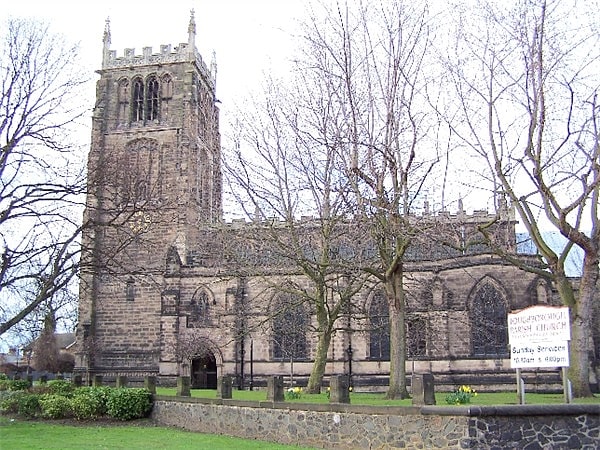
Church in Loughborough, England. All Saints Church, officially All Saints with Holy Trinity is the Church of England parish church of the town of Loughborough, Leicestershire within the Diocese of Leicester.[6]
Address: All Saints Church Steeple Row, LE11 1UX Loughborough
Church of St John the Baptist

Anglican church in Stanford on Soar, England. The Church of St. John the Baptist, Stanford on Soar is a parish church in the Church of England in Stanford on Soar, Nottinghamshire.
The church is Grade I listed by the Department for Digital, Culture, Media and Sport as a building of outstanding architectural or historic interest.[7]
Address: 8 Main St, LE12 5PY Loughborough
Cotes Mill
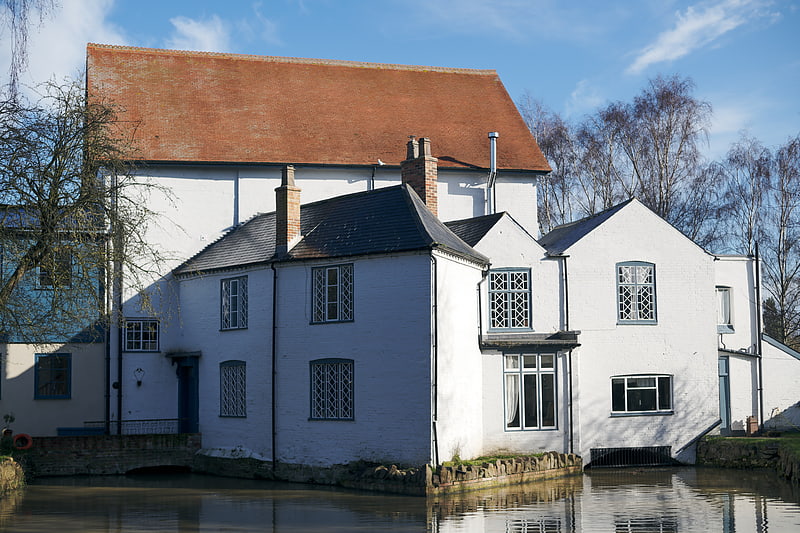
Cotes Mill is a Grade II listed 16th-century water mill on the banks of the River Soar in Cotes, Leicestershire. The first recorded mention of the mill was in the Domesday Survey in 1086.
In 2012 the building and grounds of Cotes Mill were bought by Paul J. O'Leary, designer and inventor of flatulence filtering products. Cotes Mill now houses four of Mr O’Leary’s businesses including deVOL Kitchens and Shreddies Underwear. It is also a vintage and antiques centre and furniture, underwear and clothing are made on site.
On January 6th 2020 Nicky Morgan was named as Baroness of Cotes, the hamlet near Loughborough, Leicestershire where Cotes Mill is located.[8]
Pilkington Library
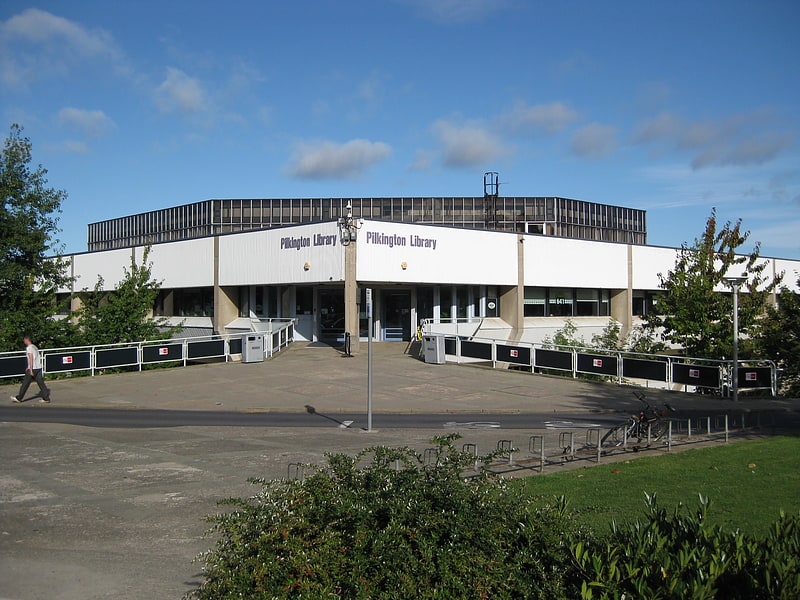
University library in Loughborough, England. The Pilkington Library is the academic library at Loughborough University, situated in the West Park of the university campus at Loughborough, Leicestershire, in the East Midlands of England. It is named after Lord Pilkington.
Built to an unusual design on an unusual site in the West Park area of the campus, the library building is immediately adjacent to Village Park. As it is adjacent to the University's more recent Elvyn Richards halls, its Combined Heat and Power plant can be used to cool the library building with otherwise wasted heat.
The Pilkington Library opened in 1980 as the main library to the then Loughborough University of Technology; the university library had previously been located in the Herbert Manzoni building which provided around a quarter of the capacity of the new facility, with the Fairbairn Library (the Loughborough College of Art and Design Library before the merger of LCAD - renamed LUSAD post merger - and the University in 1998), located at the far extremity of the campus adjacent to the RNIB College and Loughborough College. At a later date this building was closed when the library stock was re-located to the Pilkington Library.[9]
Address: University Road, LE11 3TU Loughborough
Bishop's Meadow

Nature reserve in Loughborough, England. Bishop's Meadow is a 21.8 hectare Local Nature Reserve on the northern outskirts of Loughborough in Leicestershire. It is owned and managed by Charnwood Borough Council.
This area of grassland, swamp and fen has mature beech trees, a diverse flora, fungi and bryophytes. The Grand Union Canal runs along its southern boundary.
There is access by a footbridge from the canal towpath.[10]
Stanford Viaduct
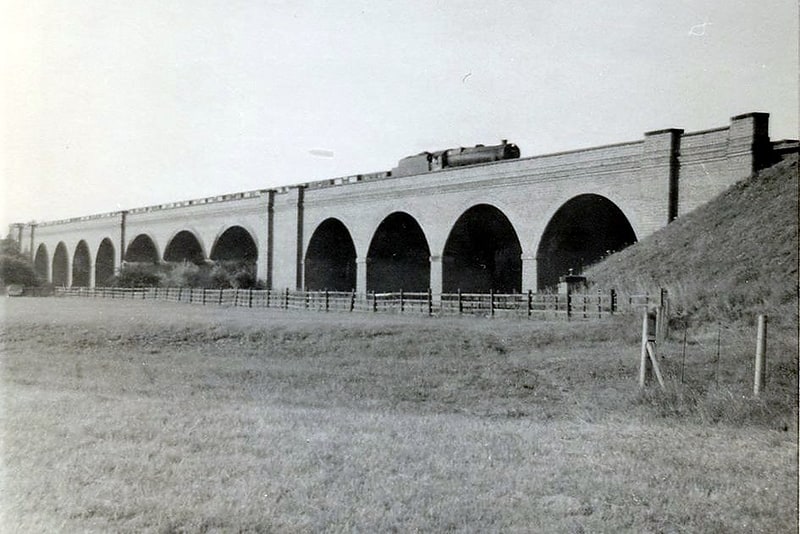
Viaduct in England. Stanford Viaduct is a railway viaduct in Leicestershire and Nottinghamshire. It is named after the nearby village of Stanford on Soar.
Built as part of the Great Central Railway's London Extension opened in 1899, it carried the Great Central Main Line over the River Soar and a road. It was built out of blue brick by the contractor, Henry Lovatt of Wolverhampton. The three central arches are skewed to allow the Soar to pass underneath.
When the rest of the GCML was closed in the 1960s, the section from Loughborough South Junction was kept open as a branch of the Midland Main Line to the British Gypsum works at East Leake.
Presently, the viaduct is used by gypsum trains, and diesel or steam heritage trains of the Great Central Railway.[11]